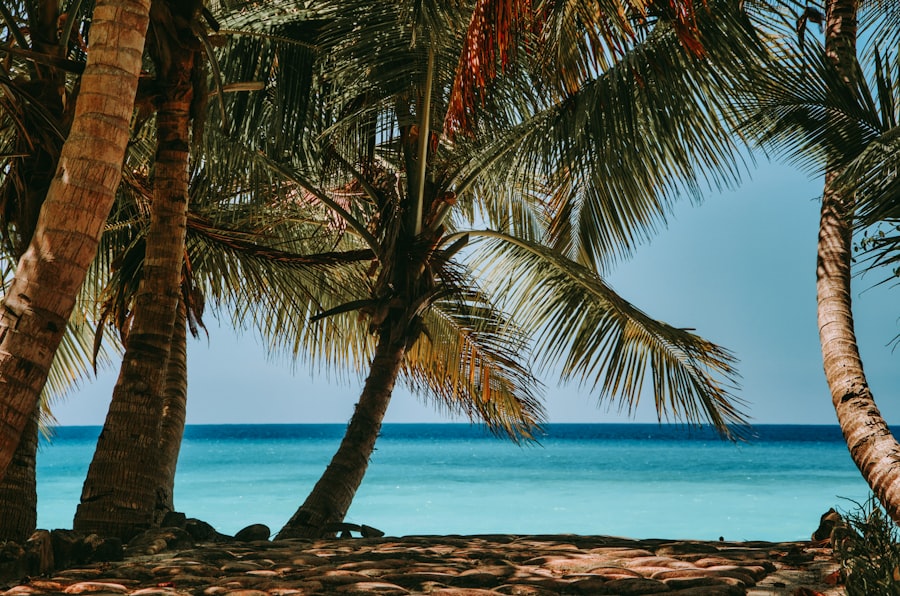Discover the Beauty of Sebu Island
Description
Sebu Island, a hidden gem in the Philippines, is part of the larger province of Cebu, which is renowned for its stunning landscapes and rich cultural heritage. Nestled in the central part of the archipelago, Sebu Island is often overshadowed by its more famous neighbors, yet it offers a unique blend of natural beauty, historical significance, and vibrant local culture. The island is characterized by its lush greenery, rolling hills, and pristine waters, making it an ideal destination for travelers seeking both relaxation and adventure.
The island’s history is deeply intertwined with the broader narrative of the Philippines, having been influenced by various cultures over centuries. From the indigenous tribes that first inhabited the area to the Spanish colonizers who arrived in the 16th century, Sebu Island has a rich tapestry of stories waiting to be explored. Today, it stands as a testament to resilience and cultural preservation, where traditional practices coexist harmoniously with modern influences.
Visitors to Sebu Island are often captivated by its serene environment and the warmth of its people, making it a perfect escape from the hustle and bustle of urban life.
Key Takeaways
- Sebu Island is a tropical paradise known for its stunning beaches, rich culture, and diverse wildlife.
- Top attractions and landmarks on Sebu Island include the historic Magellan’s Cross, the iconic Cebu Taoist Temple, and the beautiful Kawasan Falls.
- Local culture and traditions on Sebu Island are showcased through colorful festivals, traditional dances, and intricate handicrafts.
- Outdoor activities and adventure opportunities on Sebu Island include snorkeling, diving, hiking to Osmena Peak, and canyoneering in Badian.
- The culinary delights of Sebu Island feature a mix of Spanish, Chinese, and Filipino influences, with must-try dishes like lechon, puso, and dried mangoes.
- Sebu Island is home to some of the best beaches in the Philippines, including Bantayan Island, Malapascua Island, and Moalboal, offering a range of water activities such as swimming, snorkeling, and island hopping.
- Wildlife and nature reserves on Sebu Island provide opportunities to see unique species like the tarsier and explore lush forests and marine sanctuaries.
- Tips for planning your visit to Sebu Island include packing light, respecting local customs, and being mindful of the environment while enjoying the island’s natural beauty.
Top Attractions and Landmarks
One of the most iconic landmarks on Sebu Island is the historic town of Boljoon, which boasts well-preserved Spanish colonial architecture. The Boljoon Church, officially known as the Nuestra Señora de Patrocinio de Maria Parish Church, is a prime example of this heritage. Built in the 18th century, this church features intricate stone carvings and a stunning altar that reflects the artistry of its time.
The church is not only a place of worship but also a significant cultural site that attracts both locals and tourists alike. Its proximity to the sea adds to its charm, providing a picturesque backdrop for photographs. Another must-visit attraction is the Cantabaco Cave, located in the municipality of Toledo.
This cave system is known for its impressive stalactites and stalagmites, which have formed over thousands of years. Adventurous visitors can explore its depths through guided tours that reveal fascinating geological formations and historical artifacts. The cave’s cool interior offers a refreshing contrast to the tropical heat outside, making it a popular spot for those looking to escape the sun while immersing themselves in nature’s wonders.
Local Culture and Traditions

The culture of Sebu Island is a vibrant tapestry woven from various influences, including indigenous traditions and colonial history. Festivals play a significant role in the local culture, with events such as the Boljoon Fiesta drawing crowds from all over the region. Celebrated in honor of the town’s patron saint, this festival features colorful parades, traditional dances, and an array of local delicacies. The lively atmosphere during these festivities showcases the community’s strong sense of identity and pride in their heritage. Traditional crafts are also an integral part of Sebu Island’s culture.
Local artisans create intricate woven products using indigenous materials, such as bamboo and abaca fibers. These crafts not only serve as functional items but also as expressions of artistic creativity. Visitors can often find these handmade goods in local markets, providing an opportunity to support local artisans while taking home a piece of Sebu’s culture.
Engaging with these traditions allows travelers to gain a deeper understanding of the island’s history and the resilience of its people.
Outdoor Activities and Adventure
| Activity | Number of Participants | Distance (miles) | Elevation Gain (feet) |
|---|---|---|---|
| Hiking | 100 | 5 | 500 |
| Camping | 50 | N/A | N/A |
| Rock Climbing | 20 | N/A | N/A |
| Kayaking | 30 | 10 | N/A |
For those seeking adventure, Sebu Island offers a plethora of outdoor activities that cater to various interests. Hiking enthusiasts can explore the island’s numerous trails that wind through lush forests and offer breathtaking views of the surrounding landscapes. One popular hiking destination is Mount Lanaya, which provides a challenging trek for experienced hikers while rewarding them with panoramic vistas at its summit.
The diverse flora and fauna encountered along the trails add to the experience, making each hike a unique journey into nature. Water sports are another highlight for adventure seekers on Sebu Island. The crystal-clear waters surrounding the island are perfect for snorkeling and diving, revealing vibrant coral reefs teeming with marine life.
Popular diving spots include Moalboal and Pescador Island, where divers can encounter schools of sardines and even sea turtles. Kayaking along the coastline allows visitors to explore hidden coves and secluded beaches, providing an intimate experience with the island’s natural beauty. Whether it’s hiking through verdant hills or diving into azure waters, Sebu Island offers endless opportunities for outdoor exploration.
Culinary Delights of Sebu Island
The culinary scene on Sebu Island is a delightful reflection of its rich cultural heritage. Local cuisine is characterized by fresh ingredients sourced from both land and sea, resulting in dishes that are bursting with flavor. One must-try dish is “lechon,” a succulent roasted pig that is often served during special occasions and celebrations.
The crispy skin and tender meat make it a favorite among locals and visitors alike. Many restaurants on the island offer their own take on this traditional dish, allowing diners to experience different flavors and cooking styles. Seafood lovers will also find plenty to indulge in on Sebu Island.
The proximity to the ocean means that fresh catches are readily available, with dishes like “sinugbang isda” (grilled fish) being particularly popular. Local markets often feature an array of seafood options, from shrimp to squid, which can be enjoyed grilled or cooked in savory sauces. Additionally, traditional snacks such as “puto” (steamed rice cakes) and “bibingka” (rice cake baked with coconut milk) provide a sweet complement to savory meals.
Exploring the culinary landscape of Sebu Island is not just about satisfying hunger; it’s an immersive experience that connects visitors to the island’s culture.
Best Beaches and Water Activities

Malabuyoc Beach: A Haven of Relaxation
Malabuyoc Beach is a standout among Sebu Island’s stunning beaches, renowned for its powdery white sand and crystal-clear waters. The tranquil atmosphere of this beach makes it an ideal spot for families or couples seeking a romantic getaway. Visitors can unwind under the sun or take a refreshing dip in the calm waters.
Unparalleled Water Activities
For those seeking more active pursuits, Sumilon Island is just a short boat ride away from Sebu Island. This island offers exceptional snorkeling and diving opportunities, with its marine sanctuary teeming with diverse marine life, including vibrant corals and tropical fish. Visitors can also try their hand at paddleboarding or windsurfing, taking advantage of the calm waters that surround this idyllic location.
A Must-Visit Destination for Beach Lovers
The combination of stunning scenery and thrilling water activities makes Sumilon Island a must-visit destination for beach enthusiasts. With its breathtaking sunsets, picturesque beaches, and exciting water pursuits, Sebu Island and its surrounding islands are a tropical paradise waiting to be explored.
Wildlife and Nature Reserves
Sebu Island is not only known for its beautiful landscapes but also for its rich biodiversity. The island is home to several wildlife sanctuaries and nature reserves that protect its unique ecosystems. One notable area is the Olango Island Wildlife Sanctuary, which serves as a critical stopover point for migratory birds along their journey between Asia and Australia.
Birdwatchers flock to this sanctuary during migration seasons to observe various species in their natural habitat. In addition to avian life, Sebu Island boasts lush forests that are home to endemic species of flora and fauna. Guided eco-tours allow visitors to explore these natural wonders while learning about conservation efforts aimed at preserving the island’s biodiversity.
Engaging with local conservationists provides insight into the challenges faced by wildlife in this region and highlights the importance of sustainable tourism practices that protect these precious ecosystems.
Tips for Planning Your Visit
When planning a trip to Sebu Island, it’s essential to consider the best time to visit in order to fully enjoy all that it has to offer. The dry season typically runs from November to May, making it an ideal time for outdoor activities and beach excursions. However, even during the wet season, brief rain showers often give way to sunny skies, allowing for flexibility in travel plans.
Transportation options on Sebu Island are relatively straightforward but may require some planning ahead. While public transportation is available, renting a motorbike or hiring a local guide can enhance your experience by providing greater access to remote areas and hidden gems on the island. Additionally, learning a few basic phrases in Cebuano can go a long way in connecting with locals and enriching your travel experience.
Accommodations range from budget-friendly guesthouses to more luxurious resorts, catering to various preferences and budgets. Booking in advance during peak tourist seasons ensures availability at your desired location.
Sebu Island offers an enchanting blend of natural beauty, rich culture, and adventure waiting to be discovered by those willing to explore its shores.
If you’re interested in photo editing apps like Pip Camera and Candy Camera, you may also want to check out this article about Zoom Cloud Meetings on jili77.my.
It offers a variety of features to enhance communication and collaboration, making it a valuable tool for both personal and professional use.
FAQs
What is Sebu Island?
Sebu Island is an island located in the Philippines, specifically in the Visayas region. It is the second largest island in the Philippines and is known for its beautiful beaches, rich marine life, and vibrant culture.
What are the popular attractions in Sebu Island?
Some popular attractions in Sebu Island include the historic Magellan’s Cross, the stunning Kawasan Falls, the vibrant Sinulog Festival, and the beautiful beaches of Bantayan Island and Malapascua Island.
What is the climate like in Sebu Island?
Sebu Island has a tropical climate with two distinct seasons: the dry season from November to April and the wet season from May to October. The island experiences warm temperatures throughout the year, making it an ideal destination for beachgoers and outdoor enthusiasts.
What are the transportation options to get to Sebu Island?
Travelers can reach Sebu Island by air through Mactan-Cebu International Airport, which is the main gateway to the island. Additionally, there are ferry services that connect Sebu Island to other islands in the Philippines.
What are the popular activities to do in Sebu Island?
Some popular activities in Sebu Island include snorkeling and diving to explore the rich marine life, island hopping to visit the surrounding islands, hiking to waterfalls and scenic viewpoints, and immersing in the local culture through food and festivals.





